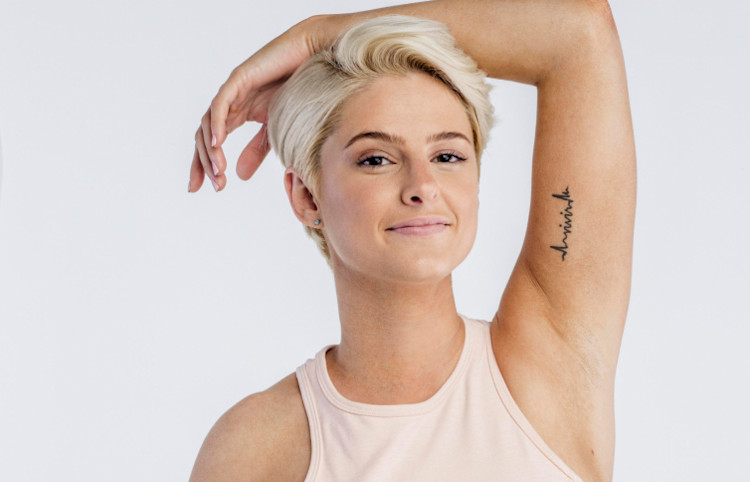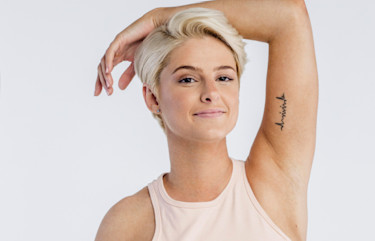Hair Removal
There are plenty of hair removal solutions available for unwanted face and body hair. We break down the most effective options, according to experts and RealSelf members.
There are plenty of hair removal solutions available for unwanted face and body hair. We break down the most effective options, according to experts and RealSelf members.
Top treatments
Other options to consider
At-home hair removal


Excessive hair growth is called hirsutism. In women, hair growth on the face and other areas of the body (like the back and chest) may be caused by one of these underlying medical conditions.
- Polycystic ovarian syndrome (PCOS) increases male hormones (androgens), which can lead to hair developing on the upper lip and face.
- Adrenal gland disorders, like Cushing Syndrome, can create hormone imbalances that trigger excessive hair growth.
- Medications can also increase hair growth as a side effect.
If you think you may have hirsutism, talk to your doctor about testing for a hormonal imbalance. Treating that first could reduce the amount of excess hair you need to remove.
Even people who don’t have excessive hair growth often choose to regularly remove unwanted hair on their face and body. Read on for the most effective solutions.
Whether you’re trying to tackle excessive hair growth or simply don’t like visible body hair, you’ve got several good options.
The two most common choices for long-term results are laser hair removal and electrolysis. Laser hair removal, which damages the hair follicle, effectively reduces the amount of hair you have, so it’s said to provide permanent hair reduction. Electrolysis, which destroys the hair follicle, offers permanent hair removal.
Laser hair removal is typically more efficient for treating large areas. For smaller areas, hair that's grown back after laser hair removal, or sensitive areas, electrolysis is usually a better choice.
Here’s the lowdown on the hair removal treatments that doctors and RealSelf members say deliver the best results.
- Laser hair removal uses an intense beam of light to heat and damage the hair follicle (but not the surrounding skin), inhibiting future hair growth. Because the light from the laser is attracted to the pigment in the hair follicle, it works best for people with dark hair and light skin tones, though there are options for those with deep skin tones. Most people need multiple sessions, spaced one to two months apart, to see significant results. One study found that participants had a more than 70% reduction in hair growth after three sessions. After a series of treatments, new hair growth tends to be slower, finer, lighter, and sparser, though you may need periodic touch-ups. The best hair removal laser depends on your skin and hair type, says Dr. Harold J. Kaplan, a facial plastic surgeon in Torrance, California. “Matching the wavelength of the laser with the skin and hair type yields the best results. For example, dark skin with coarse hair is best suited to the YAG laser [1064 nm]. Medium skin types with coarse to medium hair respond well to the diode [810 nm] laser. Finally, the alexandrite [755 nm] is for lighter skin types and finer hair.” Your provider should offer multiple lasers for all skin types. You should also receive a spot test, at no charge. Find laser hair removal providers
- Electrolysis removes individual hairs from the face or body by inserting a tiny metal probe (needle) into the hair follicle. The probe emits a pulse of electric current that destroys the follicle with heat energy. The hair is then removed with tweezers. The FDA considers electrolysis a permanent hair removal method. Electrolysis can also be used for touch-ups after laser hair removal or for people with blonde, red, gray, or white hair, which isn’t effectively treated by laser hair removal. However, according to retired Virginia Beach, Virginia, dermatologist Dr. Arnold Oppenheim, “Electrolysis is difficult with wavy, curly, or kinky hair.” Treatment time can vary widely, depending on the size of the area being treated. According to the American Electrology Association, you’ll feel a momentary heat sensation or pinch. Some areas of the body, such as the upper lip and bikini area, are more sensitive than others. Afterward, the area will be slightly red and tender for a few hours. You’ll likely need a series of several treatments, to achieve full hair removal. Once a hair follicle is destroyed, the hair is gone for good. Find electrolysis providers
Related: The Best Ways to Remove Your Unwanted Facial Hair at Home
There are quite a few different lasers that offer effective hair removal. These are some of the best options, according to providers and RealSelf community members.
- Motus Ax is the first high-speed alexandrite laser that’s safe for all skin tones. Its proprietary Moveo technology, a handpiece that delivers low-energy pulses in slow, repetitive motions (instead of the intense bursts of heat that other lasers use), makes this laser fine to use on skin tones up to Type VI on the Fitzpatrick scale. By slowly heating up the area, damage to the skin around the follicles, which can cause hyperpigmentation, is also less likely. Find doctors who offer Motus Ax
- Neo laser is a 1064 nanometer Nd:YAG laser that can be used for various skin concerns, including hair removal. It has a short pulse duration that allows the device time to cool itself between pulses, so the skin surrounding the targeted hairs never becomes hot or uncomfortable. As a result, it doesn’t cause pain, burns, or other discomfort. It’s also a good option for skin of color, per a 2019 study published in the Journal of Drugs in Dermatology. You’ll need to commit to about four to six appointments, for optimal results. Doctors on RealSelf who perform laser hair removal are also enthusiastic about another type of YAG laser called the GentleYAG. “The best hair removal laser for dark skin is the GentleYAG,” says Dr. Green. “This laser was designed for patients with dark skin.” The GentleYAG is equipped with a cooling device that delivers a shot of cryogen to the skin prior to each pulse, reducing the need for cooling gels and topical anesthesia. Still, the laser feels like a hot pinch, so you may also want numbing cream. Redness and swelling similar to those from a sunburn are common afterward but usually subside within a day. Find doctors who offer Neo laser
- GentleLase is an alexandrite laser that emits high-energy light in longer wavelengths than those of other lasers, so it can destroy deeper hair follicles. An ideal candidate is someone with light to medium skin and dark hair. The laser targets melanin in the hair shaft but may also be absorbed by melanin in the skin, which can cause hypopigmentation. As a result, people with light hair or dark (even tanned) skin are generally not treated with GentleLase. In all cases, it’s important to do a spot test prior to treatment. GentleLase can be used anywhere on the body. The laser has a large spot size and high repetition rate, so it’s one of the fastest hair removal lasers. Treatment time averages 25 minutes, depending on the area being treated and the hair density. “It can be uncomfortable, but a topical numbing agent and/or ibuprofen prior can help to dull the pain,” says NYC dermatologist Dr. Dennis Gross, who calls GentleLase the “gold standard in hair removal” in a RealSelf Q&A. Often, laser hair removal with GentleLase is less expensive than with other lasers, says Dr. Law. “Because the GentleLase has a larger spot size and allows laser hair removal procedures to be performed faster, more treatments can be performed in a day—so physicians can charge less.” As with other lasers, you’ll need a series of treatments. Find doctors who offer GentleLase
- LightSheer is a long-pulsed diode laser that uses light and heat to target the melanin in the hair follicle. The energy from the diode is not absorbed by melanin as well as it is by other lasers. “This may make it less effective for thinner or lighter brown hair but allows some dark skin types to be treated,” explains Dr. Poole. “But for dark brown skin, I still prefer the long-pulsed Nd-YAG lasers, such as the GentleYAG.” The laser is most commonly used on the back, legs, forearms, underarms, bikini area, and chin. LightSheer lasers feature a vacuum technology that incorporates suction, to elevate and stretch the skin. This allows the laser to achieve maximum absorption into the hair follicles and fast coverage of large areas, minimizing the sensation of heat. Its ChillTip cooling system momentarily numbs the skin, to further minimize pain. While the LightSheer diode laser is very effective at removing dark hair, it requires six to eight treatments, spaced four to six months apart, to provide a significant reduction in hair growth. Maintenance treatments may also be needed, once or twice per year. The Lightsheer has the advantage of avoiding the use of gels, but its overall weaker fluence (power) makes it not the laser of choice for stubborn hair or for the most complete reduction of hair. Find doctors who offer LightSheer
RealSelf Tip: Intense pulsed light (IPL) treatments are sometimes used for hair removal. One study has found that IPL with red or yellow filters is as effective as an 810 nm diode laser or 755 nm alexandrite laser. However, many doctors on RealSelf are of the opinion that IPL is not as effective as a laser for hair removal.
Related: Your Guide to Safe and Effective Hair Removal Lasers for Fair, Medium, and Deep Skin Tones
The beauty of unwanted hair removal is that there are so many ways to achieve it—including options that are doable at home. The best way depends on a few factors, including where the hair is; how soon you want it gone and for how long; and how much time (and, in some instances, money) you’re willing to spend to get rid of it.
- Shaving is fast and can be done on any area of the body. While not foolproof (cuts, nicks, and razor burn can happen), shaving is relatively painless and—depending on your taste in razors and shaving cream—inexpensive. Contrary to popular belief, shaving doesn’t change the texture, color, or growth rate of hair. But because the razor cuts the hair at the surface of your skin, the results are short-lived.
- Depilatories dissolve hair just below the surface of the skin, so it grows back more tapered and less stubbly than if you shaved. These sprays, creams, gels, and lotions also provide slightly longer-lasting results. Some depilatories contain hair-growth inhibitors so that you stay smoother even longer. These easy-to-use, inexpensive products work quickly, but they can be messy and smelly and can trigger skin irritation; dermatologists recommend doing a patch test before using them. According to the U.S. Food and Drug Administration (FDA), depilatories shouldn’t be used for eyebrows, around the eyes, or on inflamed or broken skin.
- Waxing pulls hair out by the roots. Skin stays smooth for a few weeks or more, and regrowth is soft. Over time, repeated waxing also damages the hair bulb, where individual hairs grow, potentially leading to sparser hair growth. Waxing can be done anywhere on the body, but it can hurt and—if you have it done professionally—get costly. You also have to get a little hairy before waxing, since you need a substantial amount of growth for the wax to cling to.
The American Academy of Dermatology doesn’t recommend waxing if you’re:
- Taking isotretinoin, a drug used to treat severe acne (currently or within the past six months)
- Using an antibiotic
- Using a prescription retinoid, which can thin the skin and cause tearing when the wax is removed
Be sure not to wax over moles or warts; moles can become irritated, and warts can spread. Related: How to Give Yourself the Perfect At-Home Bikini or Brazilian Wax
- Sugaring and threading are similar to waxing. With sugaring, a heated sugar mixture is spread on the skin and then lifted off in strips, to remove hair at the root. Threading is an ancient technique in which a loop of thread is rotated across the skin in order to pluck out the hair.
- Tweezing is incredibly precise (and potentially time-consuming), so it’s best reserved for small areas (eyebrows, upper lip, nipples, chin) or for plucking strays that other removal methods leave behind. Because it pulls each strand out by the root, the hair doesn’t grow back for at least a few weeks. To minimize pain and improve precision, make sure your tweezer tips are sharp and properly aligned. Pros will often use a combination of tweezing and waxing.
- Vaniqa is a prescription cream that’s FDA-approved to slow the growth of facial hair in women, usually around the lips and on the chin. Vaniqa works by blocking an enzyme in the hair follicle, making it impossible to grow hair. It can take several months to see results, but “Vaniqa works,” says La Jolla, California, dermatologist Dr. Kristen Richards in a RealSelf Q&A. “In my experience, hairs don’t necessarily grow back finer, just not as fast.” Vaniqa is often used in combination with laser hair removal.
Updated July 2, 2021





